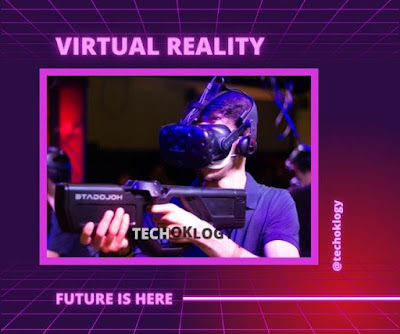It's no surprise that technological improvements have a huge
impact on our lives. The very development of technology in todays world is the
advancement in the healthcare industry.
The essential technologies are laying the groundwork for
numerous thriving healthcare innovations that are changing the health industry.
To move parallel with evolution, healthcare industries must adopt new
technology that will improve the facilities of health, reduce the costs, and
provide valued services to patients.
Overview:
"We believe consumer health innovations - apps, self-diagnosis
tools and wearables, - have the potential to enhance the patient-physician
interaction and improve overall health outcomes."
- Dr. Glen Stream.
www.runpod.io
innovative technologies, paired with a number of new
motivations such as technology-centric transformation, not only save costs but
also ensure a value-based treatment in the healthcare industry.
AI artificial intelligence, machine learning, and automation
have the potential to improve the healthcare centre to the next level.
A study at the University of Michigan shows that digitizing
information from conventional paper to electronic health records will reduce
the cost of patient care by 3%. They also calculated that each patient would
save $5.14 every month.
Furthermore, the healthcare sector is adopting revolutionary
changes as it seeks innovative ways to deliver the best patient outcomes while
reducing overall healthcare costs. What will be the future of the healthcare
industry? Let's discuss some promising technologies that are poised to
transform the healthcare landscape.
melmod.com
1. Artificial Intelligence:
Artificial intelligence is playing a crucial role in
transforming healthcare. The use of artificial intelligence in the health
sector is resolving a number of difficulties that patients, hospitals, and healthcare personnel confront.
The use of AI will supply much of the foundation by enabling
predictive and precise analytics and clinical decision support systems that
will alert providers to concerns far before they would otherwise notice the
need to respond.
Nowadays, every patient is digitally looked after, which is
more responsive and which costs less. Artificial intelligence has a wide range
of positive impacts on the healthcare industry, including disease diagnostics,
clinical decisions, management, patient monitoring, and wellness management.
In today's world, AI is taking over healthcare treatments such as
creating better diagnostics, and treatment plans, analyzing data to provide customized
and best medication, and monitoring.
AI can also to track chronic diseases with accuracy and
precision using MRI, ultrasound, CT scans, and x-rays, reducing the cost and time.
So, the patients do not have to wait for a diagnosis.
According to report by CB Insights, approximately 86% of
healthcare provider sectors, science companies, and technology vendors are practising
artificial intelligence technology in healthcare. By near future, these organizations
will have spent an average of $70+ million on artificial intelligence projects.
Let's take a look at
some of the ways AI is redefining the healthcare industry:
Using digital automation & artificial intelligence will
help in the compilation and analysis of information like (medical records,
patient information, and treatment history and previous prescriptions with no
time). AI collect, store, re-organize, and trace data in order to provide quick
delivery of healthcare services.
Robots can perform X-rays, CT scans, data entry, and other
tedious tasks more quickly and precisely.
Artificial intelligence systems have been developed to analyses
data, evaluate reports from a patient's file, and thus assist clinicians in
selecting an appropriate treatment plan. The power of AI allows for the early
detection of potentially fatal diseases.
AI assists in monitoring a patient's fitness level and
sending health updates to the appropriate provider in order to improve or
change the patient's treatment plans.
2. Blockchain:
Blockchain can be defined as a distributed system that records
peer-to-peer transactions, tracks or records changes across networks, and save and
exchanges encrypted data for cryptographies. Using blockchain technology will develop the health sector. It will improve the healthcare ecosystem and
improve the security, privacy, and interoperability of health data. This
technology will provide a new model for health information exchanges (HIE) by
making electronic medical records more effective and secure.
According to a recent study, it is predicted that by 2025 most healthcare institutes will adopt blockchain technology in their healthcare system.
"Adoption of blockchain technologies will be driven by
organisations that base their development on providing better quality care,
much like the regional health information exchange concept sparked digital
health data-sharing. Data exchange worked well in some jurisdictions."
- Brian Behlendorf, in
an interview with HITInfrastructure
What impact will
Blockchain have on healthcare?
Patient privacy and
confidentiality are the most pressing issues in healthcare. Those working
in healthcare must prioritise and improve security. Despite initiatives,
blockchain could be the ideal solution for healthcare.
Collaboration and
governance: The amount of available data has grown dramatically in recent
years and will continue to grow. Blockchain would improve data governance,
increase data ownership, improve interoperability, and result in better
data-driven decision making.
Data and analytics:
Blockchain technology is defined as a shared, permanent record of peer-to-peer
transactions that will provide new insight into how healthcare providers store
and exchange data, resulting in greater transparency and trust. Shared data
within the virtual database will result in continuous updates, improving
real-time analytics.
3.Data Science:
The volume of health data is increasing and is expected to
grow dramatically in the coming years. With over 1.2 billion clinical documents
produced in the United States each year, doctors and life scientists have an
ocean of big data for their core research. Furthermore, the use of wearable
technology generates and shares a massive amount of health-related data. The
flood of such data creates new opportunities for more informed healthcare.
Data science is an effective healthcare trend for optimising
the way hospital operations are managed. With the help of this technology, the industry can
find well-organized, cost-effective and feasible ways to tackle vast amounts of existing
healthcare data, enhancing its potential to revolutionise healthcare with
precise and error-free diagnosis.
Gaining in-depth knowledge of the human body is an essential
requirement for data scientists and machine learning experts all over the
world.
Despite having a massive amount of health data at our
disposal, diagnostic failure rates remain high. According to a recent study
conducted by the National Academies of Sciences, Engineering, and Medicine,
approximately 5% of adult patients in the United States are misdiagnosed each
year, totaling 12 million people. Furthermore, postmortem examination results
research reveals that diagnostic errors are responsible for nearly 10% of
patient deaths.
Data science plays an important role in predicting a patient
with a tumour, the risk of re-admission, or misclassified diagnoses in
electronic medical records. Data science will transform the future of
healthcare by managing and organising massive amounts of data that will prevent
healthcare problems and save millions of lives.
How Will Data Science
Impact Healthcare?
Disease Management: Using data science to improve diagnostic
accuracy and efficiency. Big data also aids in the reduction of medication
errors by improving financial and administrative performance and lowering
readmissions. Data science in healthcare can improve public health by detecting
disease patterns and recording disease outbreaks.
Patient Profile: An EMR contains standard (structured and
unstructured) medical data that can be used to identify which patients are at
risk and provide appropriate care. Advanced data science can be applied to
patient profiles to identify individuals who can benefit from the proactive
approach. It also includes a change in lifestyle.







.jpg)

.jpg)
.jpg)
.jpg)
.jpg)
.jpg)
.jpg)
.jpg)
.jpg)
.jpg)
.jpg)


.jpg)
.jpg)
.jpg)
.jpg)
.jpg)
.jpg)

.jpg)



.jpg)
.jpg)
.jpg)


